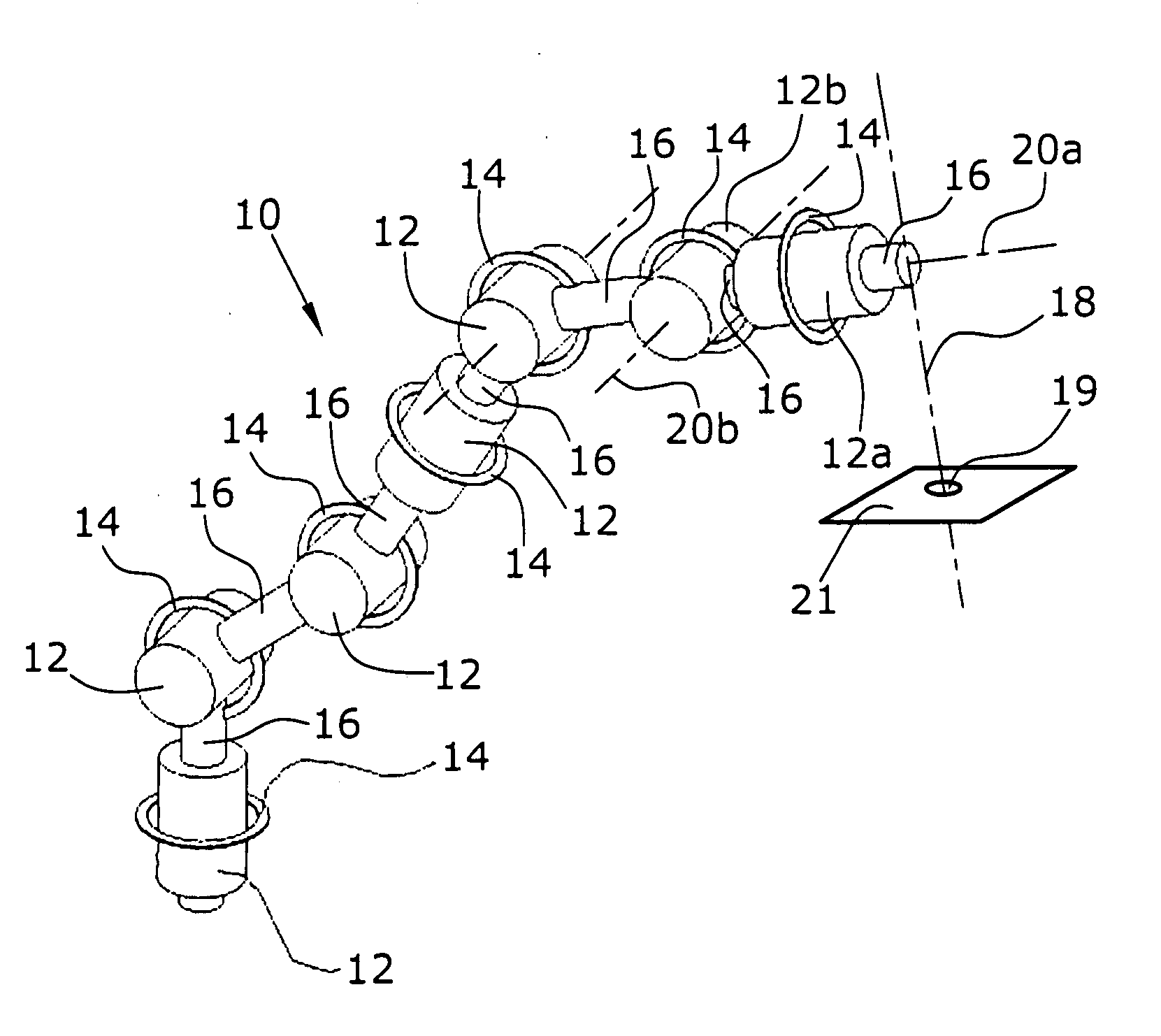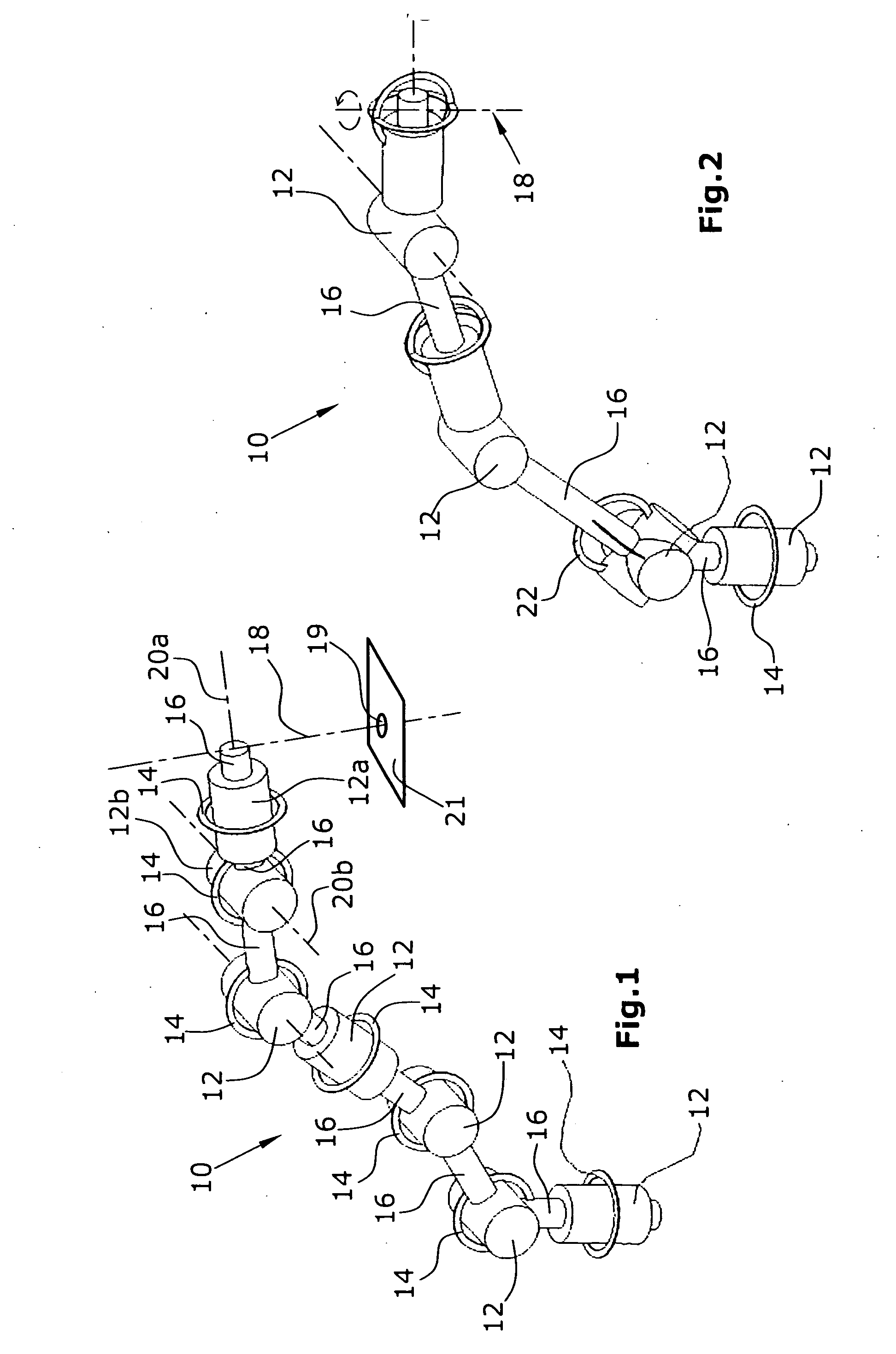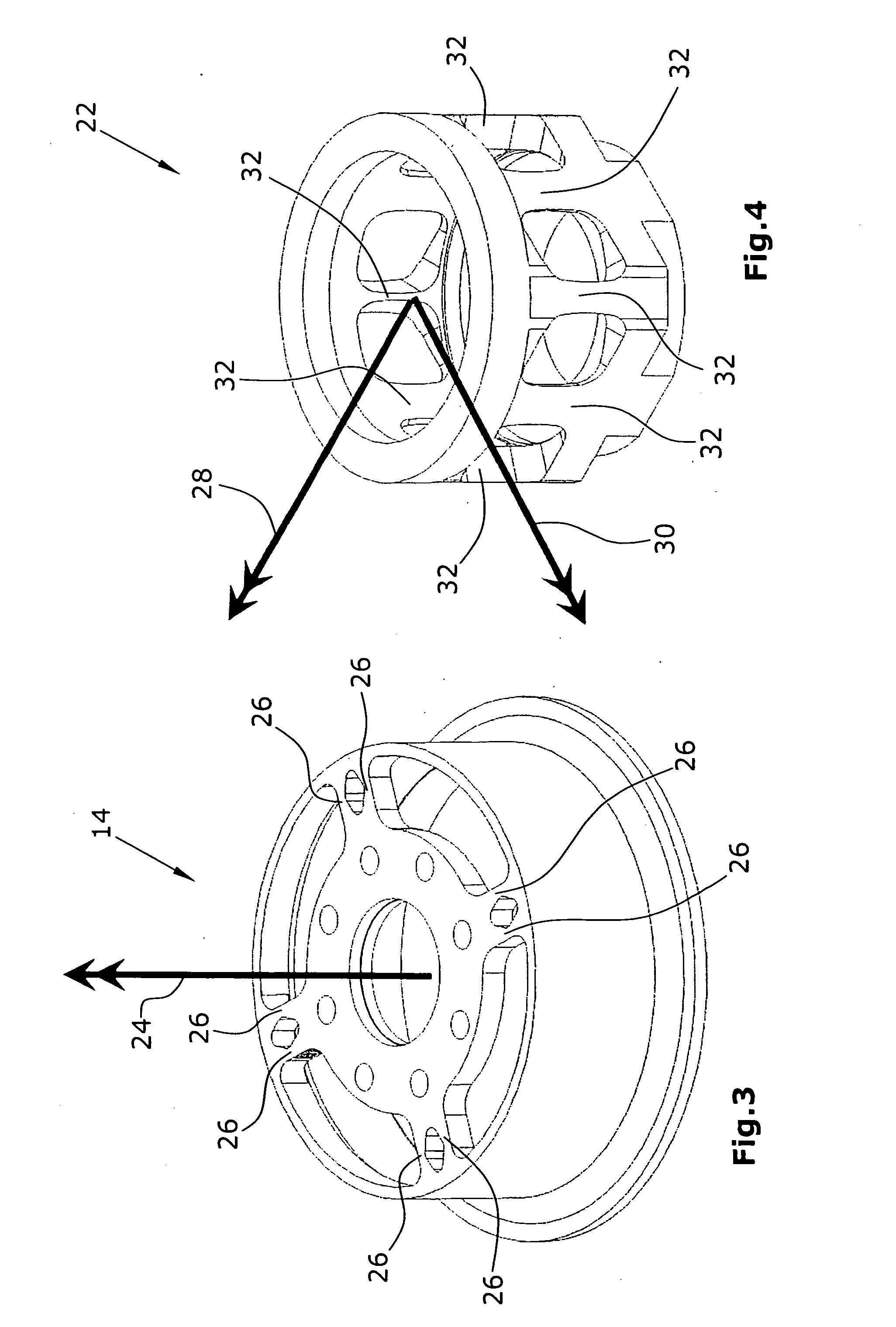[0007] It is an object of the present invention to provide a method for controlling a robot arm which reduces the risk of collisions and / or the forces acting on openings. Further, it is an object of the invention to provide a device for practicing the method.
[0018] Further, the operator can command robot movements by impressing forces on the robot arm (
haptic interaction). This possibility of interacting with the entire robot arm by manual guiding, based in this case on the control methods outlined above (this type of interaction is also referred to as
soft robotics), is an important approach to the Implementation of robots, especially in environments difficult to predict: in particular, it allows for the use of robots in medical applications, since avoiding collisions by a
preoperative planning of trajectories is not always practicable because of the dynamic and hardly predictable
scenario at the
operating table. If, for example, a collision between the robot and the environment is imminent, the robot may be given a collision-free configuration also by a non-specialist (e.g., a surgical nurse) using the above described methods, without having to interrupt the surgical procedure. In this sense, the above described operating method is ideal for the use of robots in medical applications.
[0019] It is particularly preferred to correspondingly control two joints such that the torque acting on two joints is controlled to substantially zero. Preferably, these are two adjacent joints connected through a connecting element, e.g., a web-shaped component or the like. In particular, the joints controlled according to the invention are two joints that are closest to an environment element on which no forces are exerted, and which can generate forces in the tangential plane at the penetration point. In minimally invasive applications in medikine, the present invention thus considerably reduces the occurrence of forces at the opening in the patient, with no significant forces occurring anymore because of the control, so that preferably no damages occur at the opening site. The joints controlled according to the invention are joints whose torques would generate a bearing force of the instrument at the penetration point of the inner edge of the opening in the patient.
[0021] The present invention thus allows to maintain both the base and the end
effector of the robot arm at a
fixed position and a fixed orientation, by using a robot arm with a redundant number of joints, i.e. redundant
kinematics. Here, the base of the robot arm is a first, possibly stationary, element of the robot arm. The end
effector is the last member of the robot arm, e.g., supporting the
robot hand, a
medical device etc. At the same time, the
present method allows to move an end
effector with a
fixed position and orientation through different arm configurations, i.e., to perform a zero space movement. It is thus possible to perform certain end effector movements with a kinematically redundant robot or a robot with redundant joints, which movements may be, for example, movements to be performed during a
surgical operation, while an
elbow of the robot arm is moved to other positions to avoid collisions.
[0024] Therefore, the
present method for controlling a robot arm offers the following advantages:
[0027] zero moment control of at least two robot joints in the manipulation of laparoscopic instruments to reduce the transmission of translational forces vertical to the instrument axis at the trocar point in minimally
invasive surgery.
 Login to View More
Login to View More  Login to View More
Login to View More 


